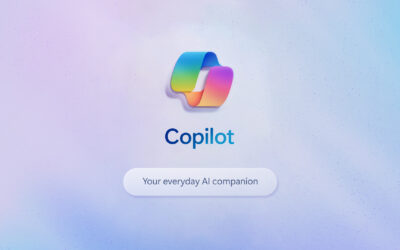Communication technology is so ubiquitous in our personal lives that we forget it can be a challenge to implement effective communication technology in the workplace. Decades of siloed infrastructure and complex technology stacks have made implementing even simple communications solutions a huge feat for many NHS organisations.
And this is making the NHS’ plan to better join up services across its organisations and wider health and social care partners ever more difficult without a strong foundation in place to enable easier communication.
NHS staff no longer need to be in the same physical place to conduct meetings, and patients no longer have to be physically present to request prescriptions or even engage with their doctors.
So What is the Issue With Communication?
As BT put it, “it’s good to talk”. But the NHS currently can’t ‘talk’ to all of its departments, staff, wider partners and patients in a simple and collaborative way. The technology isn’t available within many NHS organisations to facilitate more dynamic communications practices, such as video conferencing or secure live file sharing. This is slowing down health teams’ ability to collaborate in real-time; an issue that many Local Digital Roadmaps are looking to solve by encouraging the joining up of health services across the country.
This lack of fluid communication impacts on the patient experience by increasing response times and slowing down vital services; such as increasing the number of delayed days where healthy patients are unable to leave hospital due to a lack of effective communication between health and care organisations.
How Can Effective Communication Increase Patient Experience?
Joined up communications are crucial for delivering joined up health experiences. Improving collaboration between staff and departments is one thing, but delivering that dynamic communication ability to enable patients and their consultants or GPs to better communicate is where it starts to get really interesting.
Wi-Fi technology is now being installed in many hospital waiting rooms and GP surgeries across the UK, opening up the potential for new communications tools to be implemented. For example, as one of our technology partners puts it, new Wi-Fi implementations are enabling patients to put their time in hospital ‘to good use’ – letting them access services through smartphones to check in when they arrive for an appointment, or update personal records and details while they are waiting for their appointment. This enables the patient to not only make use of the time they are spending waiting, but also to complete tasks such as updating records in a much easier way that makes sense for them – rather than having to come in person to fill in a form, or phone the surgery to update details. It’s all about aligning processes with typical patient behaviour; letting patients update their own details through an app as they would update their banking details.
The future possibilities for these types of apps and communications tools are endless. Many GP surgeries now offer the ability to order prescriptions online, but what about offering an app to patients to let them request prescriptions? These requests could then be sent to their GP who can approve, and then finally be automatically sent to the pharmacy – with an automated notification delivered back to the patient when a prescription is ready to be picked up. Using the Uber-style technology of showing where a prescription is up to on its ‘journey’ could be a way of keeping patients updated and enable them to feel more in control of their own health.
NHS organisations can also harness this ability to engage with patients by using any information collected to provide a better service – for example, if hospitals have up to date patient contact info, then personal details can be automatically retrieved when patients contact the NHS phonelines. It’s all about finding ways to use technology in a way that streamlines services – cutting costs, reducing wasted time and improving the patient experience.
Collecting data about which patients engaged with which services, for how long and their experience of the service, lets hospitals make better operational and commercial decisions.
In the future, it’s not a far-fetched idea to imagine that connectivity technology will enable the health and social care system to use Wi-Fi access points and application data to build ‘digital pictures’ of a patient’s health journey. This could cover a patient accessing services at their local GP and then tracking their journey as they progress through hospital services, even taking into account how much time is spent at the hospital, the facilities used within the hospital and what factors contributed to their experience of the entire hospital visit. It could even extend to tracking when a patient visits a pharmacy to pick up their prescriptions following a hospital visit and app-enabled services could help patients to record when medication is taken. This would be a much more descriptive and comprehensive picture to present to their consultant during their next visit to speed up the delivery of care and deliver a more joined up service to the patient.
Staff Collaboration
As you can imagine, the range of Unified Communications technologies available means that multidisciplinary meetings that bring together representatives from across the NHS, in addition to social care contacts, can be made easier by using videoconferencing and cloud file sharing capabilities. It means that representatives from across all of these organisations no longer need to be in one physical place – and can engage whether they are based in different offices, regions or are out on the road travelling between meetings. This can help to streamline how communication is delivered between organisations, and hopefully reduce the number of delayed days; ultimately freeing up hospital beds.
This aligns with the NHS’ wider plan of joining up NHS bodies with the wider health and social care organisations – and this will be further accelerated as the Health and Social Care Network is launched and communications applications can be delivered securely across a common network.
How Can Technology Enable a More Joined-up Approach?
Technology needs to keep pace with the change in behaviour of the internet generation. We are used to accessing services (even services that deal with sensitive information) on our phones – so why treat our health information any differently?
At Redcentric, we offer a number of different routes for organisations looking to change how they communicate. From reviewing your current pricing for traditional PBX phone systems, through to implementing new IP-enabled technologies spanning VOIP, videoconferencing and cloud storage – we can help you design a plan that aligns to your Local Digital Roadmap strategies and enables you to communicate with your partner community in a more dynamic and future-proofed way.
We start by looking at what ‘joined up health services’ will look like for your organisation and regional partners, and develop a plan to build a unified communications solution that aligns to your collaboration objectives for the future.
Find out more about our Unified Communications solutions here.


